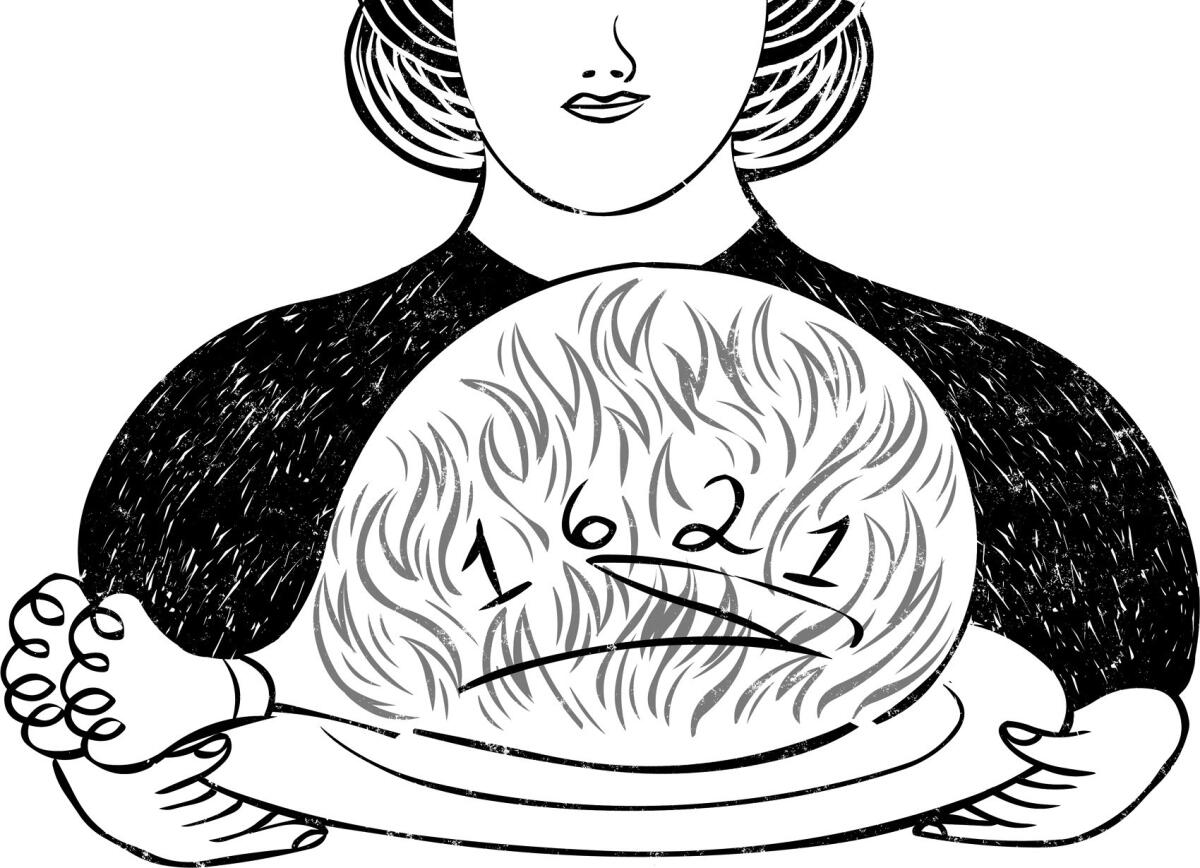How to talk to your children about Thanksgiving’s ugly history

- Share via
This week, schoolchildren across the country will come home from elementary and preschool armed with cutout paper turkeys and stories excitedly recounted about the first Thanksgiving, all those years ago in Plymouth, Mass. At school, most will learn the traditional narrative of hungry Pilgrims aided by friendly Native Americans, who shared their bounty with their less-fortunate immigrant neighbors.
But while this heartwarming story may be historically accurate, what happens next to these 17th century Native Americans and their descendants is usually left out of the classroom. Strikingly, Thanksgiving is often the only time of the year when Americans think about the history, however partial, of Native Americans. But aren’t we missing an opportunity to use this holiday as a springboard to really talk to our children about Native American history and cultures?
Unfortunately, we haven’t come very far when it applies to the visibility of Native Americans in American culture. Recently, there has been much discussion about racist depictions of Native Americans in the sports world, and it’s not hard to find other racist stereotypes in pop culture. You are guaranteed to see caricatured “Indians” on Halloween, in fashion and in movies. Too often, Native Americans are reduced to mascots or caricatures, and even many well-intentioned efforts at including Native Americans in children’s books fall flat.
PHOTOS: The Macy’s Thanksgiving Day Parade’s most controversial attractions
Recently, I went to my local library for books about Thanksgiving to read to my daughter. I was disappointed with how simplistic and watered-down the images of Native Americans were, even for children’s books. For example, nowhere were the Wampanoag named; instead, they were called simply “Indian” or “Native American.” And these stories ignore the tensions that existed between the Pilgrims and Native Americans, focusing only on a single Thanksgiving meal, as if that moment was representative of the broader complex history.
Seeing these stories made me wonder how I could counteract these oversimplified and problematic depictions of Native Americans once my daughter gets old enough to start taking them in.
Fortunately, there are resources that could be helpful in countering this unsavory American tradition of ignoring Native American cultures and history during Thanksgiving. The Indian Country Today Media Network has some helpful pieces on how to talk to children about Thanksgiving. One includes a list adapted from “Teaching Young Children About Native Americans,” by Dr. Debbie Reese, a Pueblo Nambé educator and author of the blog American Indians in Children’s Literature.
Reese suggests that we shift the focus from reenacting the first Thanksgiving and, rather than preserving the idea that Native Americans are only from the past, balance these discussions by talking about contemporary Native Americans. She also recommends analyzing popular images of Native Americans with your children and learning about specific tribes and their individual traditions. Her website also provides this list of children’s books by Native writers about Native Americans. Adding Native stories told by Native writers can help give voice to a population frequently ignored or spoken about by outsiders.
The website Offbeat Families also has an age-appropriate guide for how to talk about Native Americans and Thanksgiving.
When we avoid talking about difficult or ugly moments in our history, we are preserving a culture that sees Native Americans as invisible. When we expose our children to only racist and simplistic depictions of Native Americans, we are perpetuating the idea that they don’t matter as a population with diverse cultures and contributions. We are also underestimating our children’s intelligence and capacity for thoughtful compassion.
Thanksgiving can be a chance to fill in the gaps for children and to show them that the holiday is about more than just turkey.
ALSO:
10 ground-breaking women we lost in 2013
Conspiracy theories: Why we believe the unbelievable
Don’t like transphobic ‘jokes’? Stop watching these CBS comedies.
Susan Rohwer is a freelance journalist. Follow her on Twitter @susanrohwer.
More to Read
A cure for the common opinion
Get thought-provoking perspectives with our weekly newsletter.
You may occasionally receive promotional content from the Los Angeles Times.









